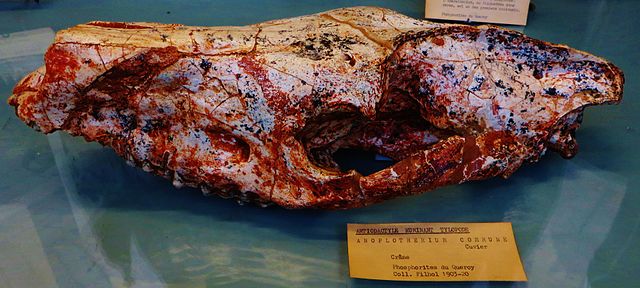Dacrytherium is an extinct genus of Palaeogene artiodactyls belonging to the family Anoplotheriidae. It occurred from the middle to late Eocene of western Europe and is the type genus of the subfamily Dacrytheriinae, the older of the two anoplotheriid subfamilies. Dacrytherium was first erected in 1876 by the French palaeontologist Henri Filhol, who recognized in his studies that it had dentition similar to the anoplotheriids Anoplotherium and Diplobune but differed from them by a deep preorbital fossa, where the genus name derives from. Since then, there are currently four valid species within the genus, of which D. ovinum is the type species.
Dacrytherium
Portrait of Henri Filhol, who erected the genus Dacrytherium in 1876 and gave more thorough descriptions of it in 1877
Upper skull of the closely related Anoplotherium commune, National Museum of Natural History, France. Note the lack of any preorbital fossa unlike that of Dacrytherium.
Endocranial cast of the related Diplobune, State Museum of Natural History Stuttgart
Anoplotheriidae is an extinct family of artiodactyl ungulates. They were endemic to Europe during the Eocene and Oligocene epochs about 44—30 million years ago. Its name is derived from the Ancient Greek: ἂνοπλος ("unarmed") and θήριον ("beast"), translating as "unarmed beast".
Skull of Anoplotherium commune, showing the unspecified dentition





